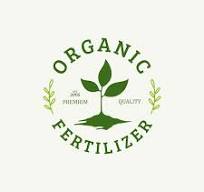Executive Summary
The global urea market, valued at USD 128.92 billion in 2023, is poised for steady growth, with projections indicating an increase to USD 160.67 billion by 2032. This represents a CAGR of 2.2% over the forecast period. Asia Pacific continues to lead the market, commanding a dominant share of 66.58% in 2023. Additionally, the U.S. market is expected to expand significantly, with a projected valuation of USD 14.40 billion by 2032, fueled by rising demand for nitrogen-based fertilizers in agriculture.
Urea is primarily produced through the reaction of ammonia with carbon dioxide to form ammonium carbamate, which is then decomposed into urea. Its high nitrogen content makes it a preferred choice for the fertilizer industry, while its versatility extends to animal feed and various industrial applications.
Market Drivers & Trends
- Agricultural Demand: The increasing need for nitrogen fertilizers, driven by the rising global demand for food and crop production, is a significant driver of urea market growth.
- Animal Feed Applications: Feed grade urea serves as a vital source of protein for ruminant livestock, supporting its demand in the animal husbandry industry.
- Industrial Applications: Urea’s chemical stability makes it valuable in sectors like chemical synthesis, fuel additives, and resins, boosting its industrial use.
- Post-Pandemic Recovery: Following disruptions caused by COVID-19, markets are rebounding, particularly in the agricultural and animal feed sectors, while industrial applications continue to recover at a slower pace.
Market Segmentation
- By Grade:
- Fertilizer Grade
- Feed Grade
- Technical Grade
- By Application:
- Agriculture
- Animal Feed
- Chemical Synthesis
- Others
Regional Insights
- Asia Pacific: Dominates the market with the largest share, driven by extensive agricultural activities and a significant demand for fertilizers.
- North America: The U.S. market is set for notable expansion due to heightened agricultural demands and increasing adoption of urea in various industrial applications.
COVID-19 Impact and Recovery
The pandemic caused significant disruptions in global supply chains and urea production, particularly in industrial sectors like chemical manufacturing. However, agriculture and animal feed industries proved more resilient. As key markets including the U.S., China, and India began recovering in 2021, the urea market regained its momentum.
For a deeper understanding of the market dynamics and trends, request a free sample PDF now.
Urea Market Trends: Technological Advancements Driving Growth
Innovative production technologies, such as Blue Urea, are creating significant growth opportunities within the urea market. This cutting-edge method of production involves attenuated reaction conditions and utilizes water, nitrogen, and carbon dioxide as raw materials. The key differentiator of this process is its reliance on renewable energy sources, like wind turbines, to power production, which are strategically placed near agricultural land or at the point of use.
In addition to reducing transportation costs and emissions, Blue Urea also mitigates the environmental impact typically associated with traditional manufacturing methods. This sustainable approach produces hydrogen via electrolysis, further enhancing the process’s eco-friendly credentials. Moreover, the resulting urea product is contaminant-free, making it especially desirable for sensitive agricultural and industrial applications. The ability to decentralize production, placing manufacturing closer to agricultural areas, not only reduces costs but also significantly cuts down on the carbon footprint, aligning the industry with global sustainability goals.
Urea Market Growth Drivers
1. Rising Demand in Agriculture: Fertilizer and Animal Feed
Urea remains a cornerstone of the global agricultural sector due to its high nitrogen content, which accounts for around 46% of its composition. Nitrogen is crucial for promoting green leafy growth in crops, directly contributing to higher agricultural yields. As soil fertility declines globally—due to both natural factors and human activity—the demand for efficient and cost-effective fertilizers like urea continues to grow.
In parallel, urea’s role as an essential protein source in animal feed is expanding, especially in livestock farming. With the rising costs of high-protein grains and the decreasing availability of grazing land, urea serves as a more affordable alternative to meet the protein needs of cattle and other ruminants. As the animal husbandry industry scales up, particularly in emerging markets, demand for urea in animal feed applications is set to rise steadily.
2. Expanding Industrial Applications
Urea’s versatility extends far beyond agriculture. The industrial sector has seen a surge in demand for carbamide, driven by its wide array of applications. Urea’s ability to form hydrogen bonds and create interpenetrating helices makes it an effective material for various industrial processes, including the production of aviation fuels, lubricating oils, and paraffin separation. Additionally, urea plays a pivotal role in automotive emissions control, where it is used in systems like BlueTec to reduce nitrogen oxide pollutants from vehicle exhaust.
The technical grade urea is extensively used in producing urea-formaldehyde resins, which find applications in marine plywood, adhesives, and nitrocellulose explosives. The pharmaceutical and cosmetics industries also leverage urea’s chemical properties, using it in products ranging from skin softeners and bath oils to hair conditioners and disinfectants. In fact, urea is a vital ingredient in products like rehydration solutions, fuel cells, and even certain medical diagnostics tools, underlining its indispensable role across various sectors.
Challenges to Market Growth
1. Increasing Costs and Environmental Concerns
The rising prices of oil and gas have driven up the cost of urea production, which is heavily reliant on these raw materials. This increase has been particularly felt in countries that rely on oil and gas imports, such as India, Brazil, Japan, and Australia. As urea prices soar, agricultural input costs rise, making fertilizers more expensive for farmers, which could impact crop production costs globally.
Moreover, the environmental impact of urea production and application has come under scrutiny. Ammonia emissions, which occur when urea is applied as a fertilizer, can have harmful effects on both human health and the environment. Carbon dioxide emissions, a byproduct of traditional urea manufacturing, contribute to the growing concerns about greenhouse gases and climate change.
In response, governments worldwide are promoting organic farming and sustainable agricultural practices, with initiatives like India’s Paramparagat Krishi Vikas Yojana (PKVY) encouraging chemical-free farming methods. These efforts could limit urea demand in certain markets, particularly where organic farming practices are gaining momentum.
Urea Market Segmentation Analysis
The urea market can be segmented based on several key factors:
- By Grade:
- Fertilizer Grade
- Feed Grade
- Technical Grade
- By Application:
- Agriculture
- Animal Feed
- Chemical Synthesis
- Industrial Applications
- Others
- By Region:
- Asia Pacific
- North America
- Europe
- Latin America
- Middle East & Africa
Each of these segments plays a crucial role in shaping the market’s dynamics, with agriculture remaining the largest application segment, followed by a strong demand for industrial and feed-grade urea.

